The Camorra and the garbage racket in the ‘Land of Fires’
Italian organized crime group is leaving a toxic legacy
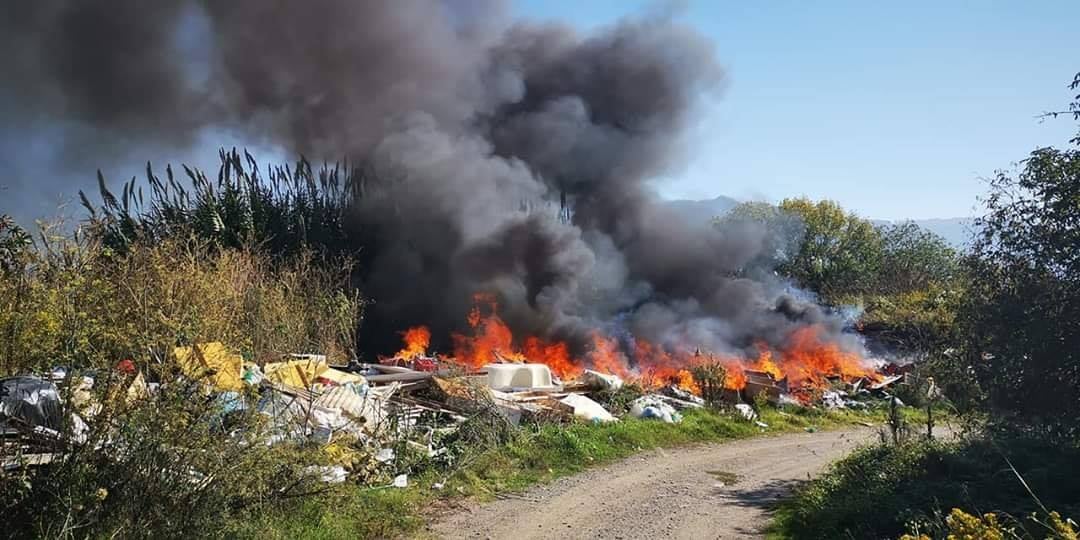
This is a condensed version of a longer case study, “Organized Crime and Environmental Issues in Naples, Italy,” that will appear in the forthcoming book Sustainable Planet (ABC-CLIO, February 2021)
Naples, Italy’s fourth-largest city, is located in Campania, a region in southwest Italy with a population of about six million. From the 1980s through the present, Naples and the broader Campania region have been dealing with a major environmental issue, the illegal dumping and burning of toxic waste. Because of this activity, the region has seen major cancer clusters leading to numerous deaths of children and young adults, damage to the surrounding environment, and significant effects on agriculture and food production in the region. This issue continues to be one of the more pressing environmental justice topics in the European Union.
The Camorra
The group behind the illegal waste disposal is the Camorra, an organized crime syndicate based in Naples. Along with the other major Italian organized crime groups – the Calabrian ‘Ndrangheta, Pugliese Sacra Corona Unita, and the Sicilian Mafia – the Camorra controls various illegal rackets, as well as legitimate businesses, in Italy and abroad. The Camorra operates in more than a dozen countries and has investments across Europe, primarily in Western Europe, as well as a presence in the United States and Canada. Though hierarchal in nature, the Camorra is not a monolithic organization. It consists of dozens of individual clans that vie for control of pieces of territory to expand their criminal empire.
Inter-clan violence is commonplace. One Camorra boss who turned informant, Antonio Iovine, told an Italian court that he committed so many murders, he lost count (McKenna, 2014). There have been numerous clan wars, including a war between the Di Lauro clan and a break-off group that resulted in more than 60 murders between 2004 and 2005.
‘Garbage is gold’
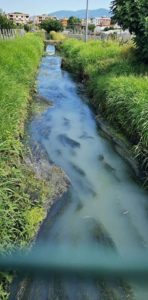
In the mid-1980s, in the aftermath of the Naples earthquake of November 23, 1980, the Camorra moved into waste hauling, primarily dumping garbage and toxic materials directly into quarries and other areas. It was a diversification away from their primary source of illicit income, narcotics. In 1992, a former Camorra boss told investigators, “I don’t deal with drugs anymore. Now I have another business. It pays more and the risk is less. It’s called garbage. For us, garbage is gold” (DeRosa, 2016). It was estimated that in 2013 alone, illegal disposal of garbage and toxic waste generated 16.3 billion euros for organized crime syndicates throughout Italy, including the Camorra (Newcomer, 2015).
The success of the waste-hauling operation is predicated on a steady supply of customers willing to go along with the Camorra. In many cases, the Camorra did not have to actively seek out willing partners, nor strong-arm companies to use their services. By bypassing environmental regulations, taxes and legal disposal methods, which, for toxic waste, can be costly, the Camorra-run companies are able to provide a service to potential customers at a far cheaper price, undercutting legitimate waste-hauling companies (D’Alisa et al, 2015). The cost to properly dispose of hazardous material in Italy ranges from 21 to 62 cents/kilo. The Camorra waste network can process that waste for 9 to 10 cents/kilo, a significant cost savings for companies (DeRosa, 2016).
The businesses that went along with the Camorra paid a tax to the Mob to assist with bribery of public officials. The Camorra then bribed officials to close incinerators, forcing more refuse to be trucked away, and by cornering the market on trucking firms, the Camorra was able to control virtually all the private refuse management in the region. This is not dissimilar from the way the American Mafia controlled waste hauling in New York City for decades.
‘Land of Fires’
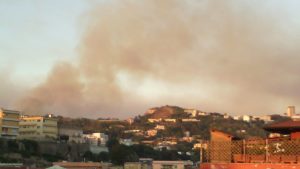
The region of Campania is the epicenter of the waste crisis. Known as the Land of Fires, from the constant burning of garbage, Campania is one of the most densely populated, yet one of the poorest regions of Italy. It’s GDP in 2016 was €18,600, corresponding to 66 percent of the Italian average (European Commission, 2017). The Italian government has identified more than 5,000 dump sites in an area of 55 communities in the Campania region.
All the dumping of waste, coupled with the fires from burning garbage, have caused a major human health crisis. Starting around 2000, local doctors in the town of Maddaloni, 25 kilometers from Naples, began seeing a dramatic increase of patients coming in with cancer. The types of cancer ranged from rare bone cancers and childhood leukemia to bladder and breast cancers. The other thing that mystified doctors was the age of patients, which had decreased significantly compared to years past.
The town of Acerra, halfway between Naples and Maddaloni, saw a rash of aggressive cancers and farmers with high levels of dioxins in their blood. Follow-up studies found high levels of dioxins and polychlorinated biphenyls, both considered human carcinogens by the World Health Organization’s International Agency for Research on Cancer, in animal milk and high levels of dioxin in breast milk of local women. Cancer rates in Acerra have risen 30 percent while other smaller towns have seen rates increases of up to 47 percent (Newcomer, 2015). Acerra and the nearby towns of Nola and Marigliano are referred to as the “Triangle of Death” (Mazza et al, 2018).

The Italian Cancer Research Institute in Naples found a 47 percent increase in tumors for men in the Naples area compared with the rest of Italy. The U.S. Navy, which has staff and families living in bases at the Gricignano Support Site and Capodicino, undertook a $30 million study from 2008 to 2011 and found that servicemen and family members who lived at these sites for more than three years would be exposed to health risks (Newcomer, 2015).
The economy of the area was affected as well. In 2014, the minister of agriculture prohibited the sale of buffalo mozzarella, one of the region’s signature agricultural exports, after it was found that the milk of buffalo was contaminated with dioxins. Wine and olive oil exports from the region were also banned in 2014.
Local activism
For many people outside southern Italy, the fact that a major environmental crisis was unfolding in one of the richest countries in the world was not widely known. Nor was the pervasive influence of the Camorra. But in 2006, a best-selling book, Gomorrah (later made into a movie and successful TV series) brought the underworld of Naples to international attention.
Legambiente, founded in 1980, is one of Italy’s largest environmental activist organizations. It became aware of the waste problem in Campania and worked on a number of studies looking into Campania. In 2013 it published a summary of 82 investigations into toxic waste dumping in southern Italy, illustrating the pervasiveness and economic impact of the criminal activity.
There are activist Facebook groups, such as La Terra dei Fuochi, which offer a sounding board for residents of the area, places where they can report complaints and work with other activists to raise awareness of continued illegal dumping and fires in their areas. Protests and marches had become a regular occurrence in Naples. Activists work together to address various aspects of the crisis, from hyper-local issues to a broader social and environmental justice platform (DeRosa, 2016).
Government action
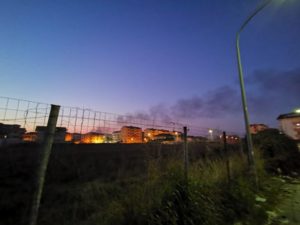
Local activism was targeted at a government that many felt was indifferent to the plight of Campania and did not seem to be interested in tackling the serious issues that so many had brought to light. But the government had tried to take on the problem previously. In 1994, regional governments in Campania started to make efforts to wrest waste hauling from Camorra control, and the central government declared a state of emergency. It appointed a special commissioner to oversee the issue, but he was primarily focused on urban refuse issues and not the burgeoning illegal toxic waste situation. This only led to more influence by the Camorra into illegal dumping.
In response to large protests in Naples about the waste crisis, the Italian Senate adopted Legislative Decree No. 136 in 2014, referred to as “Urgent Measures to Tackle Environmental and Industrial Emergencies and the Facilitate the Development of the Concerned Areas.” (Slaybaugh, 2017). The decree created a government group tasked with protecting the public health. The new law also made it a crime to burn illegal waste and strengthened existing laws enacted to combat the pervasive influence of the Camorra in the region (Slaybaugh, 2017).
Current status
Italy has been slow to address the situation in Campania. It was only in 2014 that the government declared the area an environmental disaster (DeRosa, 2016). But pressure from environmental groups and exposure in the news media have kept the pressure on the government to strengthen and enforce the laws and remediate dump sites.
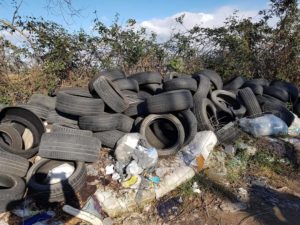
More than a dozen major epidemiological studies have been done in the Campania area since the early 2000s supporting residents’ claims of health hazards from the dumping, in addition to many more studies on the wildlife, livestock and vegetation. Campania is now the most investigated area in Italy relating to environmental conditions (Mazza et al, 2018).
Italian law enforcement efforts against the Camorra also increased. Camorra members, facing long prison sentences, began to turn against their former criminal compatriots, and new regulations increased prosecutors’ ability to go after Camorra money. In March 2019, Marco DiLauro, son of former Camorra kingpin Paolo Di Lauro, was arrested after 14 years as a fugitive.
As for the toxic dumping and fires, the situation has not been completely resolved. According to La Terra dei Fuochi, between August 24 and 25, 2019, 70 illegal waste fires burned between Naples and Agro Aversano, a city in the Caserta province of Campania. And fires were still being reported as of February 2020.
Further reading
D’Alisa, G., P.M. Falcone, A.R. Germani, C. Imbriani, P. Morone, F. Reganati. 2015. “Victims in the ‘Land of Fires’: A case study on the consequences of buried and burnt waste in Campania, Italy.” A study compiled as part of the EFFACE project, University of Rome “La Sapienza.”
DeRosa, Salvatore, “Drivers of Illegal Waste Disposal: The Case of Campania, Italy,” Entitle Blog. European Network of Political Ecology, August 2, 2016.
European Commission. 2017. “Campania.”
Mazza, A., p. Piscitelli, A. Falco, M.L. Santoro, M. Colangelo, G. Imbriani, A. Idolo, A. DeDonno, L. Ianuzzi, A. Colao. 2018. “Heavy Environmental Pressure in Campania and Other Italian Regions: A Short Review of Available Evidence.” International Journal of Environmental Research and Public Health. 15 (January 2018).
McKenna, Josephine. 2014. “Mafia boss ‘lost count of killings.’” The Telegraph, June 8, 2014.
Newcomer, Daniel. 2015. “Coping With Naples Toxic Waste Crisis.” Earth Island Journal, August 25, 2015.
Slaybaugh, Jason. 2017. “Garbage Day: Will Italy Finally Take Out Its Trash in the Land of Fires?” Washington International Law Journal 26 (2017): 179-205.
Feedback or questions? Email blog@themobmuseum.org





